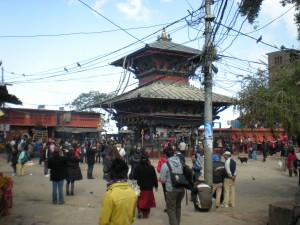It is incredible to watch the changes in this country as we travel from Kathmandu to the southern city of Birganj. Its not as if Kathmandu is the most developed city in the world, but it is clear that it is and has been a city in a bubble, completely separated from the rest of the country politically, economically, and in terms of the conflict.
As we left the city for a twelve hour drive that was meant to be a mere six hours, the scenery began to change before long. The winding hill highway outside of Kathmandu is filled with farms and construction areas which turns in to shacks lining the road.
When we leave the hill region and go in to the Terai region, the visibility of the poverty clearly increases and I can start to see more than just dogs roaming the villages and towns as in Kathmandu. Some chickens, cows, and goats can be seen all over, but as we drive in to Birganj, they are literally everywhere. The city is completely dilapidated, the roads steadily worsened the whole way. In Birganj, they are bumpy, uneven, and unpaved. There are few cars but the streets are filled with horse and cow drawn carriages and the air is practically unbreathable – a mixture of smoke, pollution, dust, and who knows what else. There are also a significant amount of people defecating and urinating on the sides of the road in easy view of everyone.
As difficult of a place as Birganj is, it is so much more representative of the rest of this conflict-ridden country than Kathmandu.





